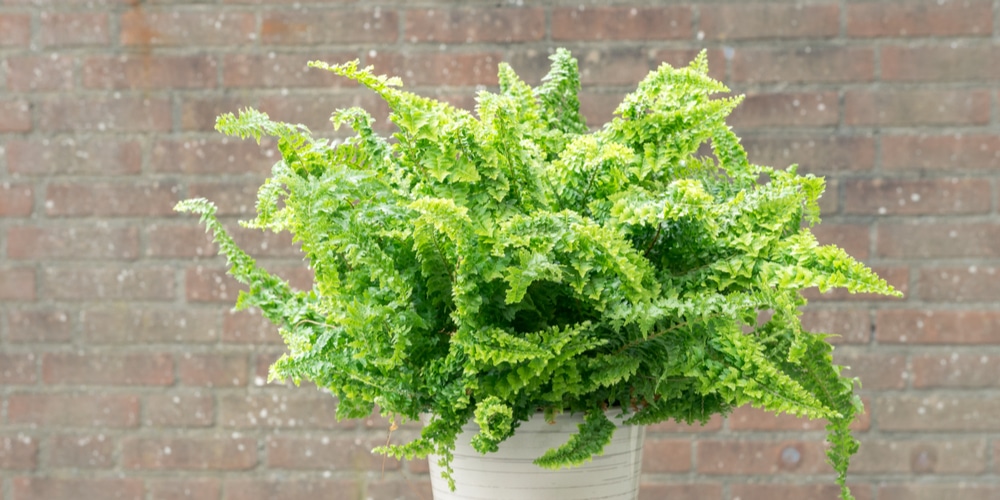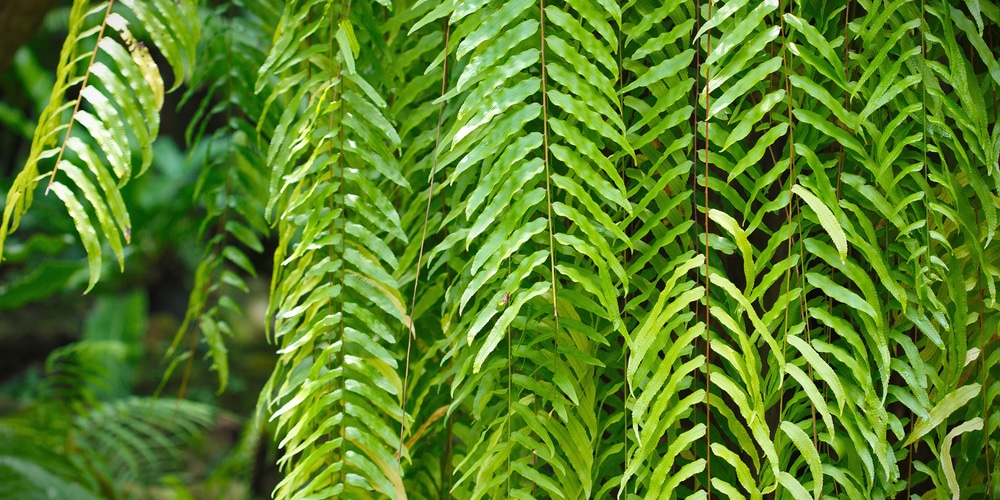Ferns are gorgeous plants, perfect if you want to add a touch of greenery and some texture to your garden, porch, or patio. Under the ideal growing conditions, they perform well as houseplants too. You can use them to decorate your interiors and add some character to your rooms. However, with the numerous varieties of these plants, it might get confusing to tell them apart.
But don’t worry: keep reading if you want to learn about the differences between Macho ferns vs Boston ferns. We collected everything you must know about these plants in this essential guide!
Macho Fern Vs Boston Fern: All You Need to Know
It is easy to confuse different types of ferns. After all, most have similar characteristics. However, if you look closely at them, you’ll realize each variety has a couple of details another doesn’t have. To clear the confusions you may have about macho ferns and Boston ferns, jump to the following sections!
Differences
To begin with, you must look at the physical appearance of the plants. For instance, a Macho fern (as you may expect from its name) is taller than a Boston one.
With proper care, it will come to measure up to 4 feet high and 6 feet wide. Also, its fronds are more voluminous, longer, and display bolder leaflets.
Usually, Boston ferns are almost blue-green, while the Macho variety has bright green foliage. Boston ferns tend to spread in width rather than height. This plant will rarely grow higher than 2-3 feet tall.
Finally, of the two, the Macho has a tidier growth pattern. On the other hand, Boston fern develops on bendy fronds that give it an unorderly appearance. The leaf texture is also different: Macho ferns tend to have foliage that feels more coarse than Boston ones, which have a smoother feel and look more glossy.
You may want to know that Macho ferns grow slower than Boston varieties. For the first, you’ll have to wait as much as seven years before it reaches maturity. On the other hand, a Boston fern might get to its adult size in 4 years.
Similarities
Once you know about the differences, it might be worth knowing about the similarities. Both need similar conditions to thrive: well-draining and fertile soil with bright indirect light or partial sunlight.
The two plants have similar foliage, with leaflets of the same size and sword-shaped fronds. However, if you look closer at them, you may realize that Macho fern leaves are slightly more rounded. But that’s a slight difference that is challenging to notice.
Coming back to the similarities, they both perform well as indoor plants (and will create a gorgeous effect in hanging pots). Like all ferns, neither the Boston nor the Macho variety will produce flowers (so, only take them to enjoy their foliage).
Place your ferns at temperatures between 60 and 70°F and avoid exposing them to frost or excessive heat: both might kill your plants.
And don’t worry if you have kids or pets running around: these ferns aren’t toxic. Since the two are relatively easy to care for plants, they are suited to even beginner gardeners: they won’t require too much attention from your side.
Which One Should You Pick?
Selecting one of these two ferns for your garden (or house, where they can grow in hanging baskets) depends on what you are looking for in a plant.
For instance, if you need something compact that could grow in your apartment, we recommend you go for a Boston fern. The same applies if you only have limited space in your garden. Indeed, as you may know by now, this plant won’t grow as tall and wide as the Macho fern.
Additionally, the Boston fern is less challenging to find (and more popular) than the Macho variety. But if you want a plant that can help you make a statement in your garden, don’t hesitate to investigate more about the Macho fern. After all, its popularity has been increasing over the past few years, making it less of a rarity. Still, you may have better luck purchasing one online.
The two are hardy plants that usually don’t need too much to thrive. As long as you pick a suitable potting mix and maintain them moist at the proper temperature (and select a location with enough sunlight), you shouldn’t encounter problems growing either of these plants!

